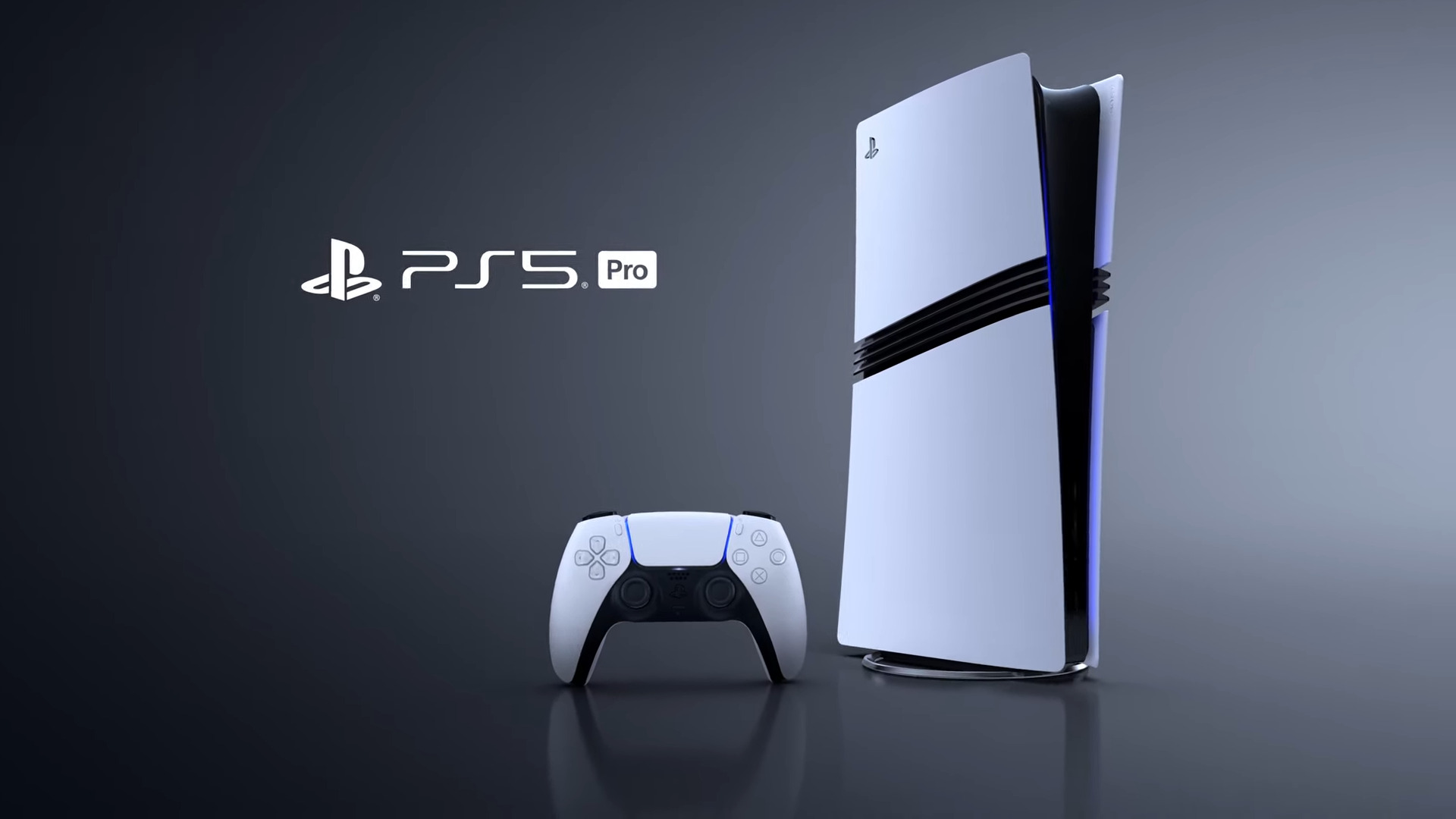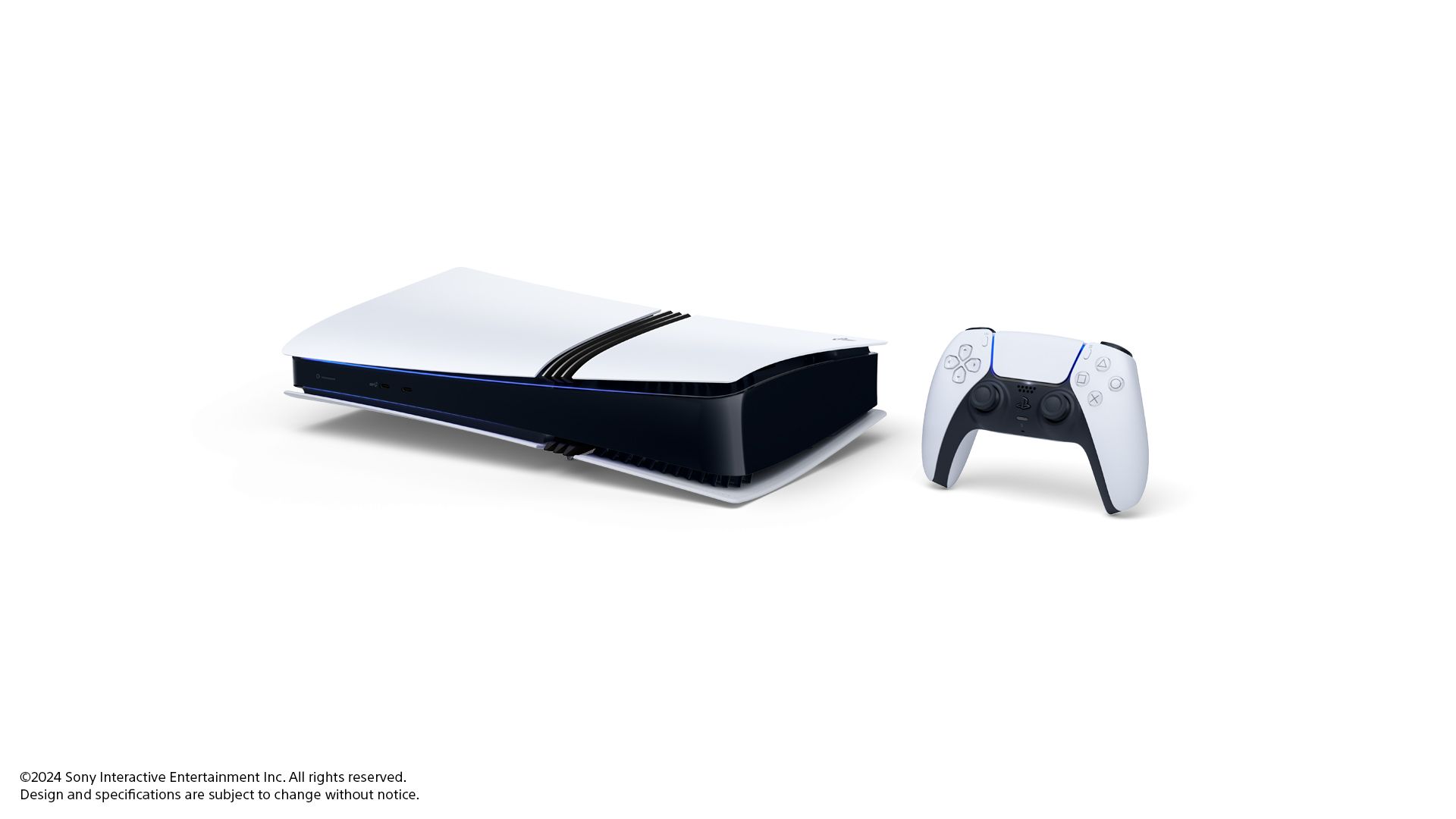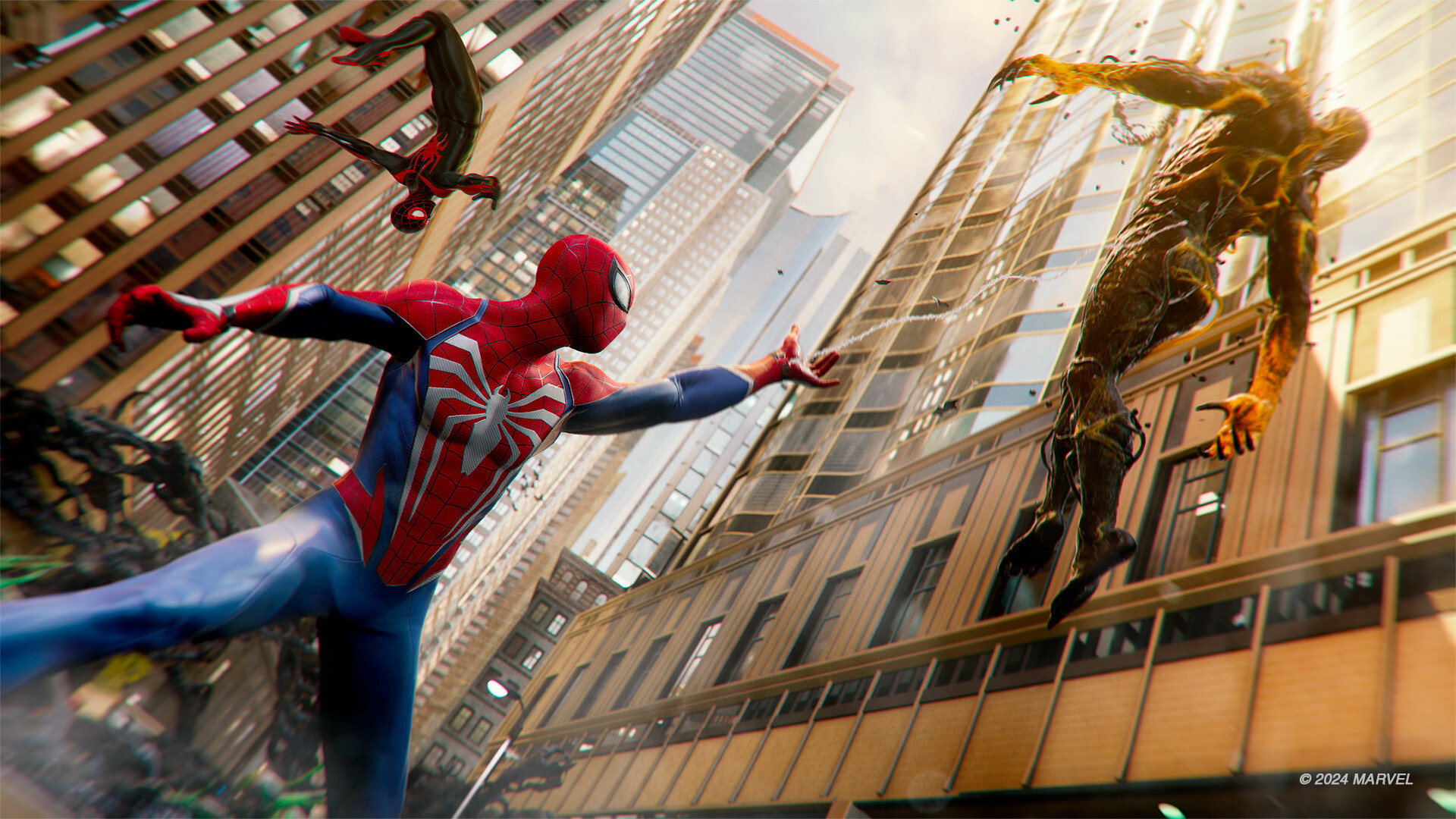
After many months of memes, mocking, and outright bafflement at who would buy it, the PS5 Pro launches worldwide on November 7th for an eye-watering $699.99. There are a lot of questions to ask – what’s in the box, especially if Sony is selling the disk drive and vertical stand separately? What are the specifications, and how does it match up to equivalent to PC hardware (as best as possible, anyway)? How do various titles, both patched and unpatched, previous and current generations, benefit from the console’s power? And last but not least: Do you really, really need one?
Let’s dive into everything you should know about the PS5 Pro and whether it’s worth picking up.
What’s in the Box?
As you’ve doubtless seen in numerous unboxing videos till now, the PS5 Pro ships with the console (all important), a single DualSense wireless controller, an HDMI cable and an AC power cord. It also has two plastic stand feet used to mount the console vertically, much like on the PS5 Slim, if you don’t want to splurge on the vertical stand for $29.99. Based on impressions thus far, these work just as well for the PS5 Pro as they did for the Slim. There’s also a paper safety guide in the box outlining the console’s specs and other features. Overall, it’s about what you expect based on the marketing thus far.
Final Specs
Of course, the inside of the console is what counts, and we finally have the final specifications for the PS5 Pro. Its processor is a custom AMD Ryzen Zen 2 with eight cores and 16 threads, while the RDNA-based Radeon GPU offers 16.7 TFLOPS of performance. There’s also 16 GB GDDR6 RAM, an additional 2 GB DDR5 RAM and a 2 TB custom SSD (with an unspecified amount of space reserved for console operations).
Regarding ports, you get two USB Type-A ports that support SuperSpeed USB 10 Gbps and two USB Type-C slots, one supporting Hi-Speed USB and the other SuperSpeed USB 10 Gbps. A Key M expansion connector for installing an M.2 SSD is present alongside a port for installing the separate Blu-ray disc drive (which costs $79.99).
Other features include Wi-Fi 7, Bluetooth 5.1, an HDMI Out port, and an electrical rating of 220-240 V ~ 1.9 A (50/60 Hz) with a maximum rated power of 390 W. Operating temperature comes in at around five to 35 degrees Celsius. Finally, in terms of dimensions, the PS5 Pro is 388 mm in width, 89 mm in height and 216 mm in depth, weighing approximately 3.1 kg.
Right off the bat, it’s more sleek and lightweight than the base console, which weighs 4.5 kg and measures 390 mm in width, 104 mm in height, and 260 mm in depth. Even when matched against the PS5 Slim Digital Edition, which also doesn’t have a disc drive, the latter is about 2.6 kg and measures 358 mm in width, 80 mm in height and 216 mm in depth. The PS5 Pro thus measures up quite well in size and dimensions. But what about the hardware?
PS5 Pro sports the same CPU clock speed as the base PS5, which is 3.5 GHz. PS5 Pro supports a “High CPU Frequency Mode”, which boosts that from 3.5 to 3.85 GHz, with the GPU downclocking by 1.5 percent as a result. However, Sony has yet to officially confirm the feature’s existence.
The GPU is also an interesting enigma, with its 45 percent faster rendering and 67 percent more compute units. It offers a memory bandwidth of 576 GB/s, and overall, its performance is slightly above the AMD Radeon RX 6800 overall.
Naturally, there’s the question of longevity. The PS5 launched in 2020 and though it wasn’t deemed as immediately outdated like the PS4, the hardware has been overtaken pretty comfortably over the years. The High-Frequency Mode in the Pro should help provide an edge, though its overall usage (if it indeed exists) will be situational. The GPU should prop it above the most-utilized PC equivalents, but its closest competitor, the RX 6800, is from November 2020. It’s still fairly higher than the base PS5’s 10.23 TFLOPS, but make no mistake – this is a mid-gen console refresh without question.
Features
By now, you know about the PS5 Pro’s main selling features. PlayStation Spectral Super Resolution is arguably the most significant, with the proprietary tech using machine learning to upscale resolutions to higher levels. The results in terms of image clarity are astounding to witness thus far, and it furthers Sony’s narrative of bridging the gorgeous visuals of Fidelity Mode with the smoother frame rate that Performance Mode offers.
The other big feature is advanced ray tracing, offering double and sometimes triple the cast speeds. Dynamic light reflection and refraction are also improved, though this is on a game-to-game basis (which applies to PSSR as well, but we’ll get to that). Perhaps most surprising is that the feature isn’t present in current AMD GPUs.
Considering how big of a selling point ray tracing was for the current generation of consoles – and how the results have ranged, especially with the performance impact – the Pro appeals to those who really want to leverage the technology.
Of course, the console does have some extra bells and whistles, like seemingly capturing 8K resolution screenshots, VRR support, etc. PS5 Pro Game Boost is also noteworthy, improving or, as Sony puts it, “stabilizing” the performance of over 8,5000 PS4 titles that are backwards compatible. You can also use Enhanced Image Quality on “select” PS4 titles to boost their resolution.
The Games
Marvel’s Spider-Man 2 and Ratchet and Clank: Rift Apart are notable examples of improving the current graphical modes while offering more customization over the ray tracing experience.
Both offer Performance Pro and Fidelity Pro modes, with the former targeting 60 frames per second and providing ray tracing for water, window interiors, and much more. PlayStation Spectral Super Resolution ensures the image quality is at the same level as Fidelity Mode, but Fidelity Pro goes even further. Despite targeting 30 FPS, it improves hair details and the density of traffic and pedestrians in Spider-Man 2.
It also has toggles for ray-traced reflections, ray-traced key light shadows (again, exclusive to Spider-Man 2), and ray-traced ambient occlusion. Each offers further options to fine-tune (like screen space GI bounces, smoother reflection animations, etc.) while keeping performance in mind, though you need a display that supports VRR to take advantage of this.
Guerrilla Games’ Horizon Forbidden West is even more interesting because, as Digital Foundry reports, it’s utilizing a new anti-aliasing reconstruction method that doesn’t rely on PSSR or checkerboarding. The upsampling is built for future titles (take that as you will), but the image quality is downright gorgeous and backed by incredibly stable performance at 60 FPS.
Granted, this is on Performance Mode with the resolution maxing out at 1584p while details, but there’s also a Quality Mode for native 4K. Players will also benefit from increased shadow filtering on forward-rendered objects, including skin and hair (the latter looking particularly fine with its details). Lighting volumetrics benefit from increased sample quality.
Another standout example of how well Fidelity and Performance modes can merge, resulting in something that surpasses either on PS5, is Final Fantasy 7 Rebirth. As many will be aware, the PS5 version caused a bit of controversy due to the image quality of Performance Mode. Quality Mode was better, but it only delivered 30 frames per second (and had other issues besides).
Versatility Mode on the PS5 Pro added in a recent update combines the two and offers a much more stable 60 FPS experience alongside better image clarity. Further geometric elements didn’t have the best resolve, and LOD pop-in still creates some issues. It’s a definite step up from the PS5, so hopefully, the current patch offers more improvements.
While extensive testing has yet to be done on many PS4 titles, it’s inevitable to wonder how FromSoftware’s Bloodborne performs on the console. There’s no official patch for the title – heck, it doesn’t even have a base PS5 upgrade. Thus, the 30 frames per second cap remains, but what about the Enhanced Image Quality?
In this case, it seemingly offers some sharpening, resulting in more clarity when reading text or going through the user interface. The resolution is more or less the same, though, and there are no significant jumps to pixel density (at least none noticeable from preliminary footage). The wait continues for a proper update or at least a full-fledged remake, which should arrive any day now, surely.
Conclusion
Remember when the PS4 Pro was announced and the resulting hype? It wasn’t overwhelming, sure, but its retail price of $399, especially after the PS4’s price cut to $349 (to say nothing of the PS4 Slim costing $299), made it appealing. And yet, its sales only account for about 20 percent of total lifetime PS4 sales, per Sony Interactive Entertainment CEO Hideaki Nishino.
We’re a long way from that era of hardware pricing, and thanks to the vast gulf in price from the base version, the PS5 Pro is incredibly challenging to recommend to the average customer. Given how several recent titles can look noticeably better than we’ve seen, there’s definitely an audience for those wanting the most out of their PS5 games. Features like 8K resolution sound nifty on the surface, but even if you have a supporting TV or display, they’re nowhere near as common as 4K displays. As such, the Pro looks to best deliver on what the base PS4 should have – specifically 4K gaming at 60 frames per second (through AI upscaling, sure, but it still counts).
However, even if you didn’t factor in the disc drive or vertical stand, it’s much to ask consumers to pay almost $700. There’s also the question of the inevitable PlayStation 6. With how much of the PS5 Pro’s hardware is rooted in the past, is it really a good long-term investment? What if the next generation of PlayStation finally implements a Zen 3 CPU and embraces RDNA 3 or even the upcoming RDNA 4 GPUs?
It’s hard to say, but if you have the money and a solid home theater set-up for your gaming, the PS5 Pro is at least worth looking into. The improvements it brings to the table in ray tracing, image quality, and resolution are too notable to ignore. If only it didn’t have so many terms, conditions, and associated additional costs that make the whole ordeal much more trying.


















